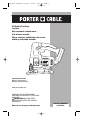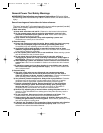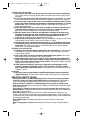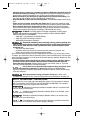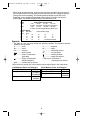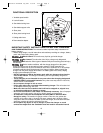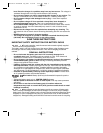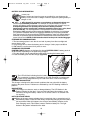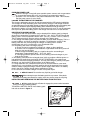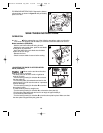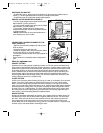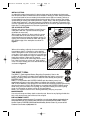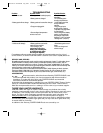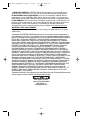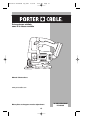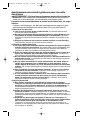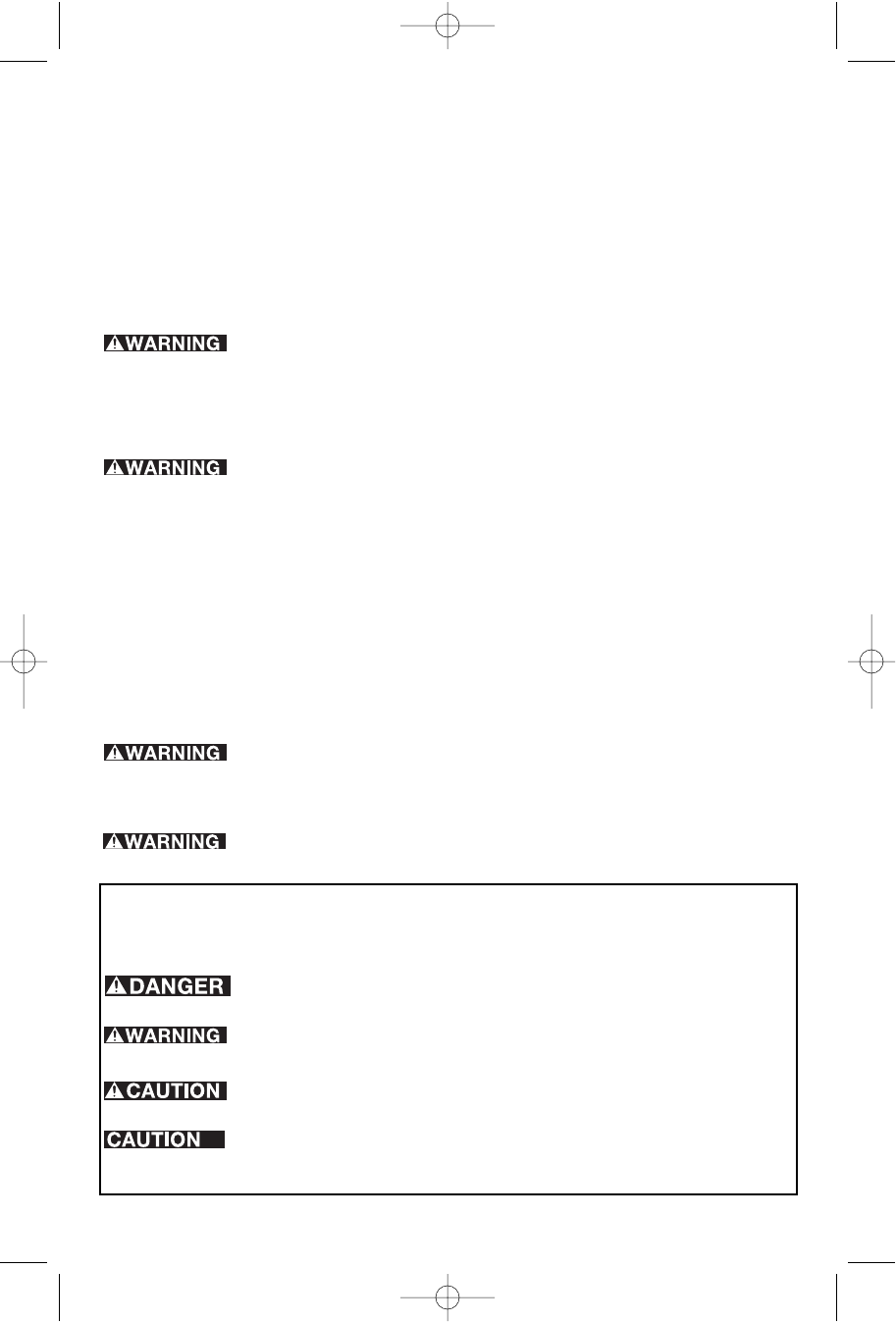
4
• Allow the motor to come to a complete stop before withdrawing the blade from the
kerf (the slot created by cutting). A moving blade may impact the workpiece causing a
broken blade, workpiece damage or loss of control and possible personal injury.
• Never hold work in your hand, lap or against parts of your body when sawing. The
saw may slip and the blade could contact the body causing injury.
• Keep handles dry, clean, free from oil and grease. This will enable better control of the
tool.
• Clean out your tool often, especially after heavy use. Dust and grit containing metal
particles often accumulate on interior surfaces and could create an electric shock hazard.
• Do not operate this tool for long periods of time. Vibration caused by the operating
action of this tool may cause permanent injury to fingers, hands, and arms. Use gloves to
provide extra cushion, take frequent rest periods, and limit daily time of use.
ALWAYS use safety glasses. Everyday eyeglasses are NOT safety
glasses. Also use face or dust mask if drilling operation is dusty. ALWAYS WEAR
CERTIFIED SAFETY EQUIPMENT:
• ANSI Z87.1 eye protection (CAN/CPA Z94.3),
• ANSI S12.6 (S3.19) hearing protection,
• NOSH/OSHA respiratory protection.
Some dust created by power sanding, sawing, grinding, drilling, and
other construction activities contains chemicals known to the state of California to
cause cancer, birth defects or other reproductive harm. Some examples of these
chemicals are:
• lead from lead-based paints,
• crystalline silica from bricks and cement and other masonry products, and
• arsenic and chromium from chemically-treated lumber.
Your risk from these exposures varies, depending on how often you do this type of work.
To reduce your exposure to these chemicals: work in a well ventilated area, and work with
approved safety equipment, such as those dust masks that are specially designed to filter
out microscopic particles.
• Avoid prolonged contact with dust from power sanding, sawing, grinding, drilling,
and other construction activities. Wear protective clothing and wash exposed
areas with soap and water. Allowing dust to get into your mouth, eyes, or lay on the
skin may promote absorption of harmful chemicals.
Use of this tool can generate and/or disperse dust, which may cause
serious and permanent respiratory or other injury. Always use NOSH/OSHA
approved respiratory protection appropriate for the dust exposure. Direct particles away
from face and body.
Wear appropriate hearing protection during use. Under some
conditions and duration of use, noise from this product may contribute to hearing loss.
SAFETY GUIDELINES - DEFINITIONS
It is important for you to read and understand this manual. The information it contains
relates to protecting YOUR SAFETY and PREVENTING PROBLEMS. The symbols
below are used to help you recognize this information.
Indicates an imminently hazardous situation which, if not avoided, will
result in death or serious injury.
Indicates a potentially hazardous situation which, if not avoided, could
result in death or serious injury.
Indicates a potentially hazardous situation which, if not avoided, may
result in minor or moderate injury.
Used without the safety alert symbol indicates a potentially hazardous
situation which, if not avoided, may result in property damage.
:
:
:
:
:
:
:
:
90550119 PC1800JS Jig Saw 4/9/09 7:52 AM Page 4



